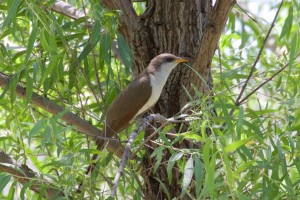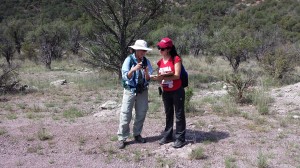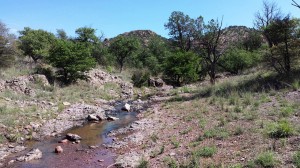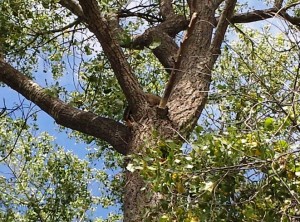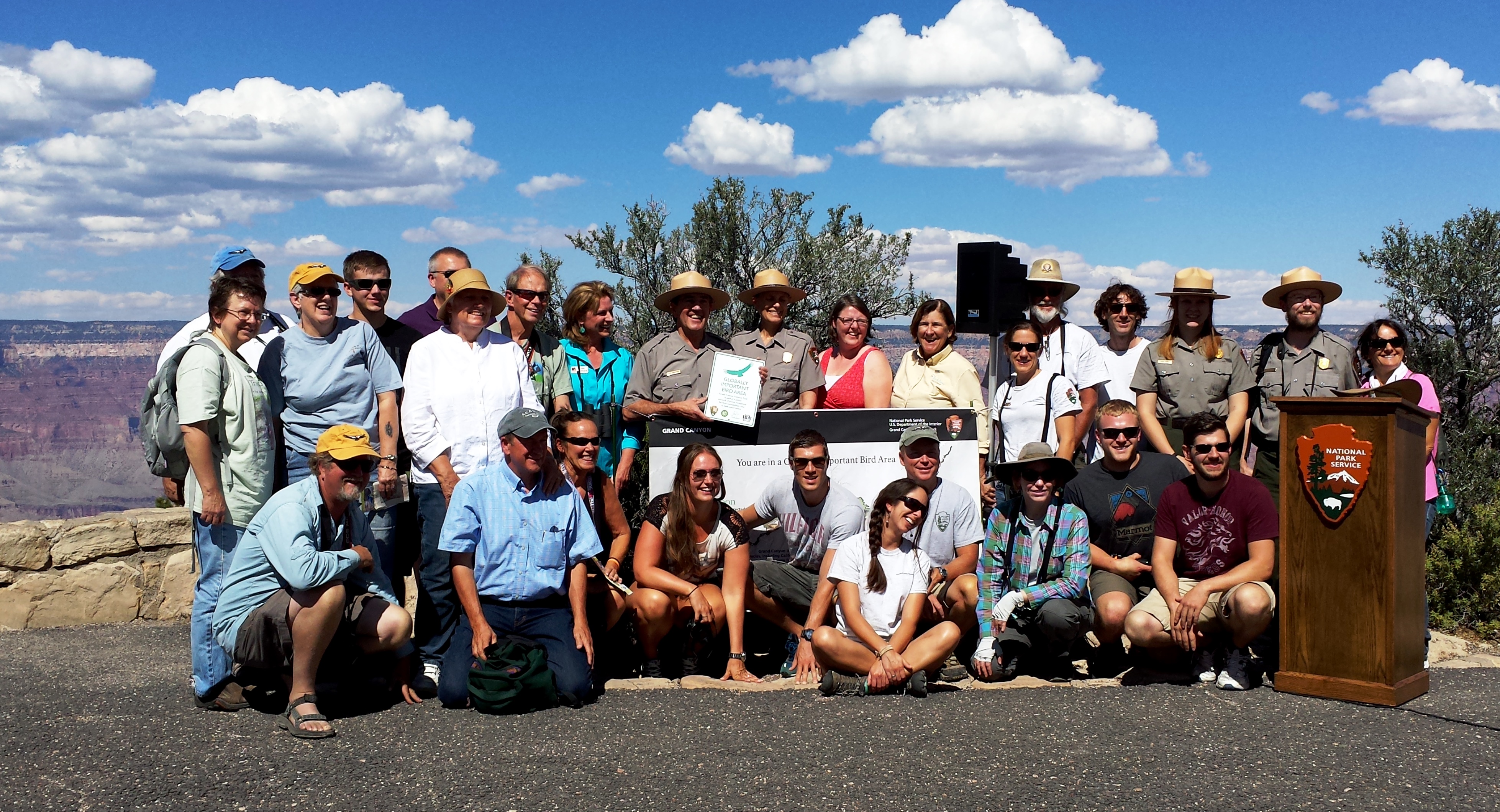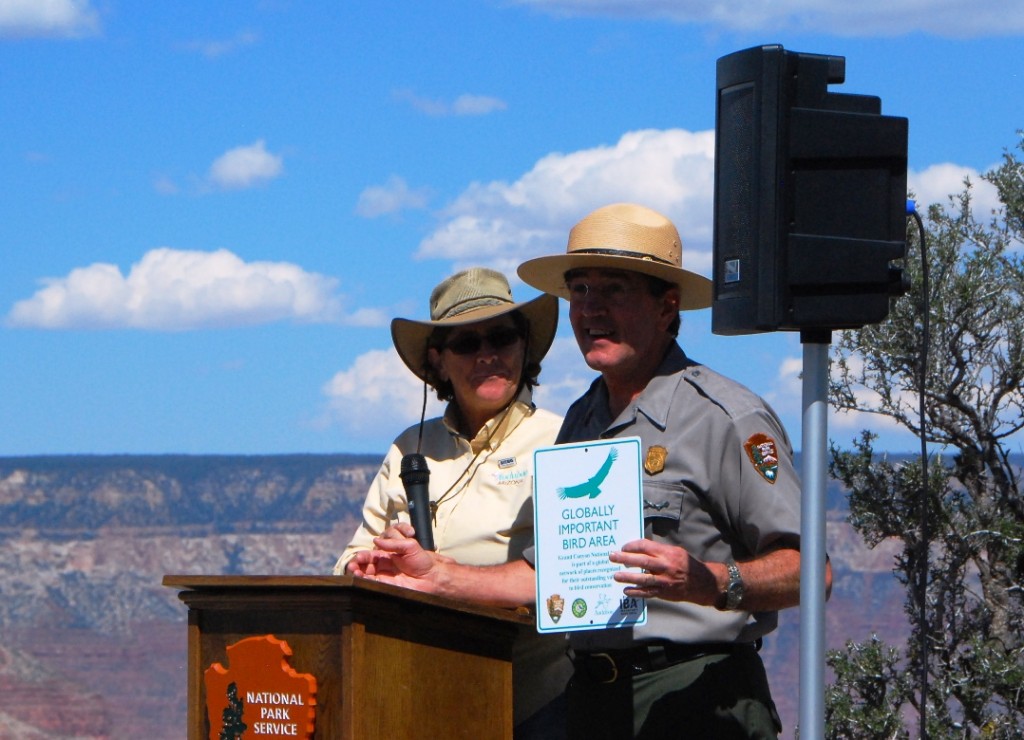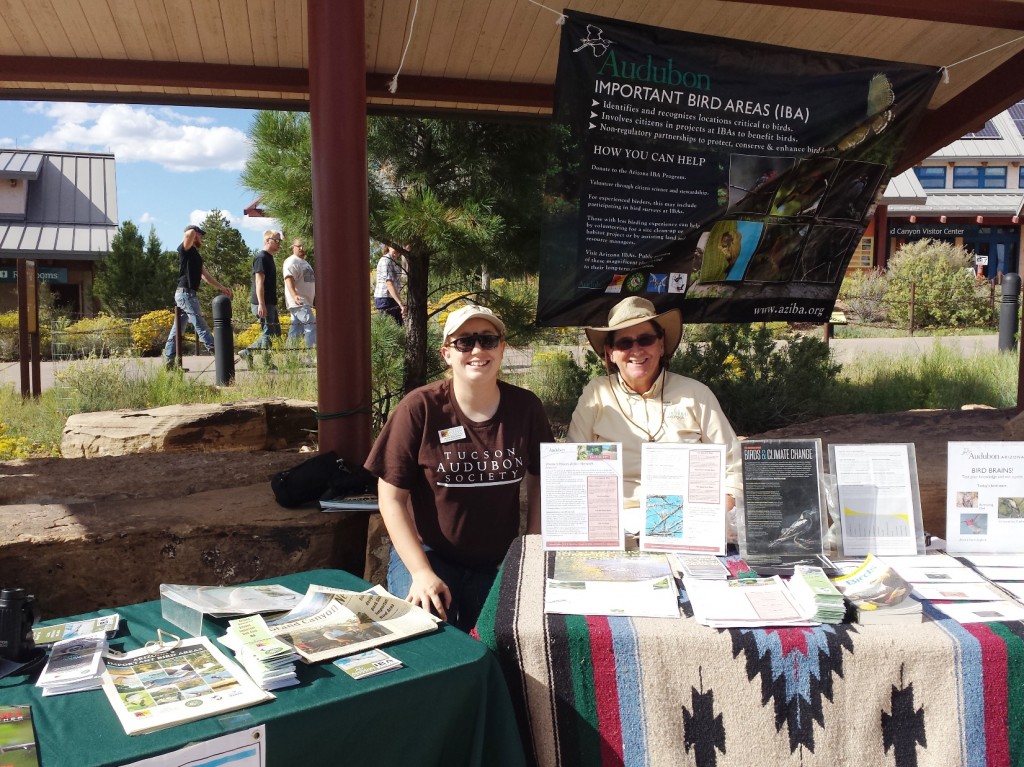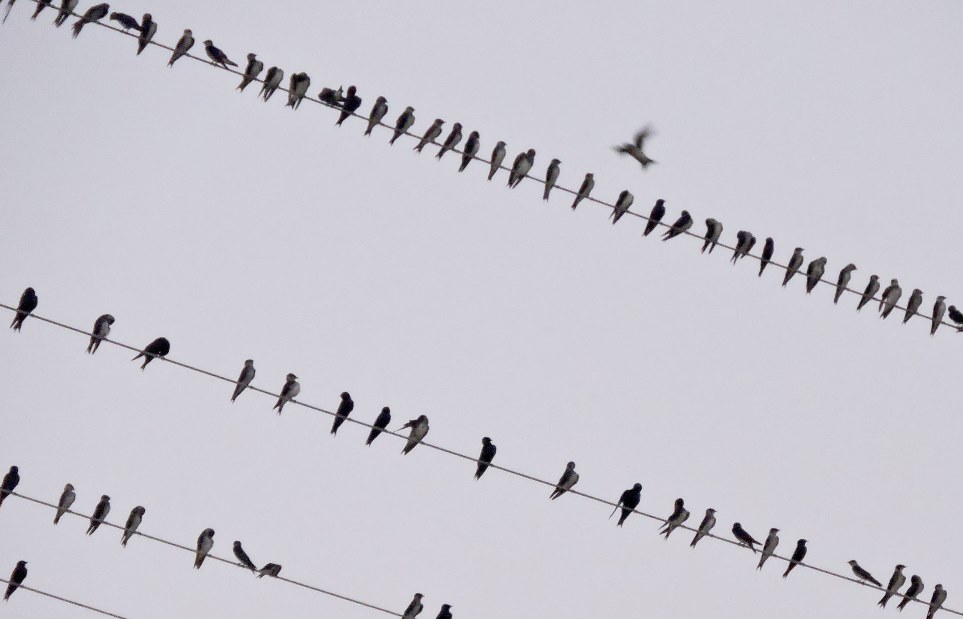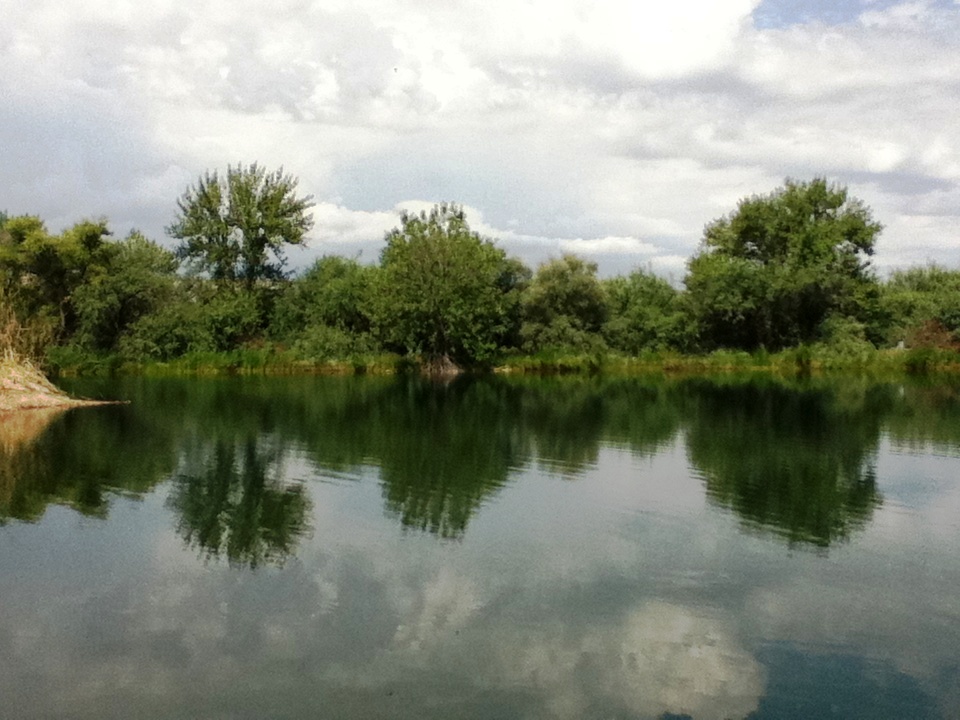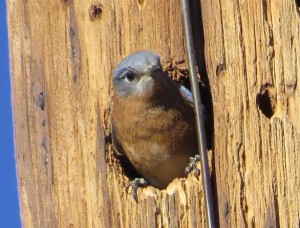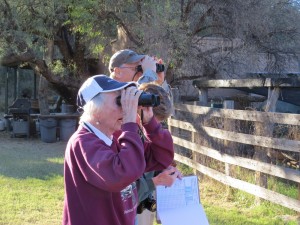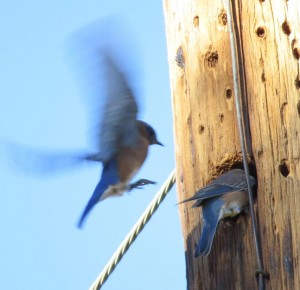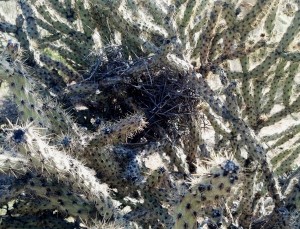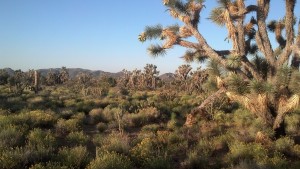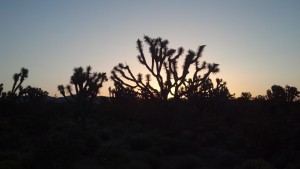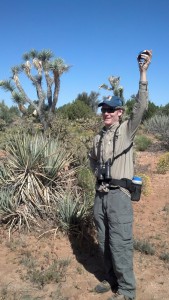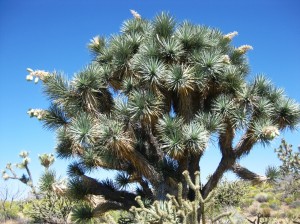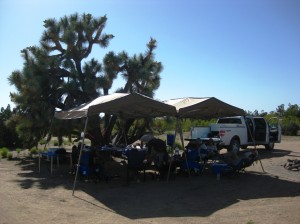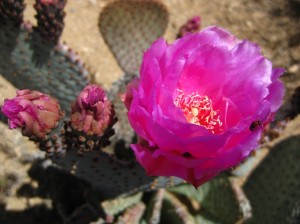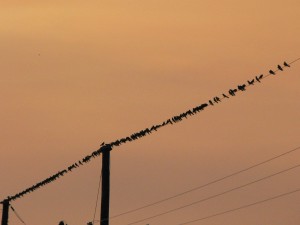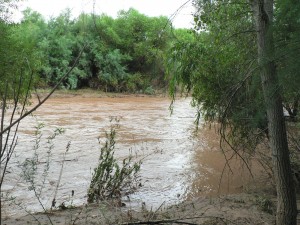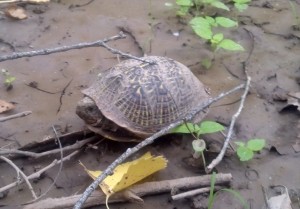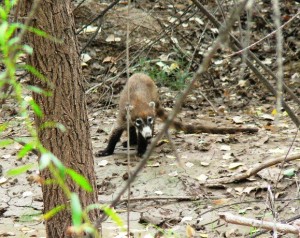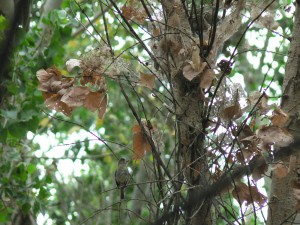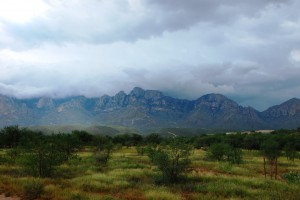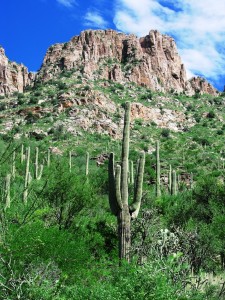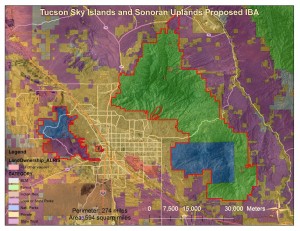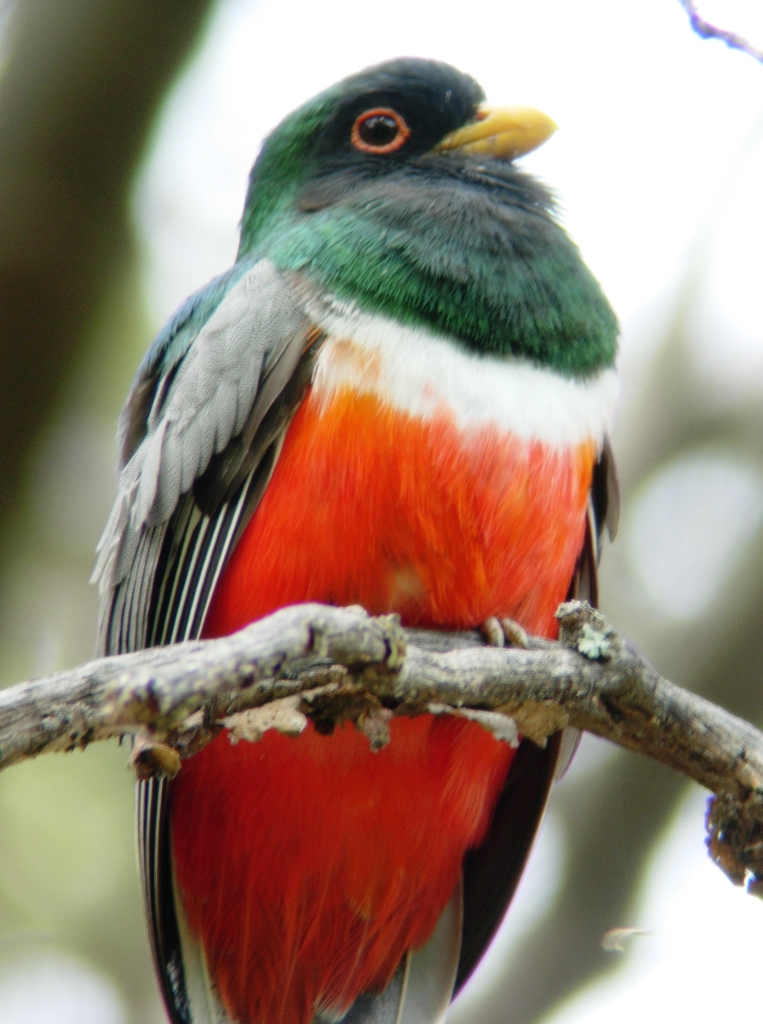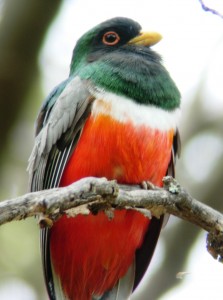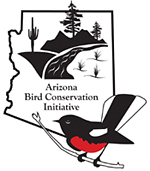2013 Summary of Arizona Elegant Trogon Census Results
by Rick Taylor, Count Compiler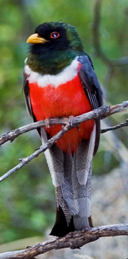
On the weekends of June 1-2 and June 8-9, 2013 some 79 volunteers turned out to census Elegant Trogons in all 5 border ranges in Southeastern Arizona where they are known to occur. Counters recorded all visual and audio observations in their territories from 6-11 a.m. By comparing times and locations of observations I was able to deduce the minimum number of Elegant Trogons present. Altogether 86 Elegant Trogons were documented: 49 males, 22 females, and 15 unknowns not assigned to gender because they were heard but not seen. All females were in proximity to males with whom they were assumed to be paired, yielding a total of 22 probable pairs. Eighty-six (86) represents the minimum known population of Elegant Trogons in the border mountains of Southeastern Arizona as of June 9, 2013.
These results probably do not fully account for all female trogons present. At this time of year many female trogons are incubating eggs or brooding chicks for most of the morning. Based the behaviors of male trogons during the census, as well as incidental observations just prior to the counts in the respective mountain areas, an additional 11 trogons that were neither seen nor heard by the counters were thought to be present. These birds that escaped detection during the actual census are shown in parentheses in the table below.
2013 Elegant Trogons Totals in Arizona:
Santa Rita Mountains: 10 males. 6 females, 1 unknown (+2 probables) = 17 (=19)
Atascosa Mountains: 8 males, 3 females, 0 unknown (+2 probables) = 11 (=13)
Patagonia Mountains: 8 males, 2 females, 5 unknown (+0 probables) = 15 (=15)
Huachuca Mountains: 17 males, 9 females, 8 unknown (+4 probables) = 34 (=38)
Chiricahua Mountains: 6 males, 2 females, 1 unknown (+3 probables) = 9 (=12)
Totals: 49 males, 22 females, 15 unknowns, (+11 probables) = 86 (=97)
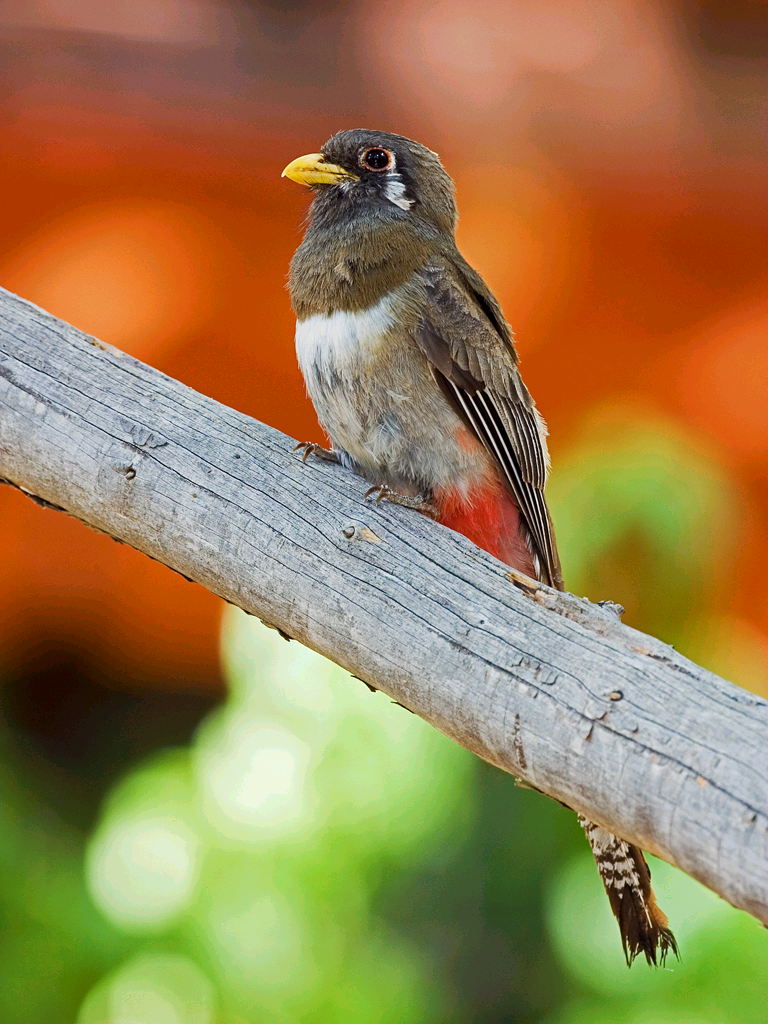
Elegant Trogon, female, by Bob Wenrick
The areas selected for this count were canyons from which Elegant Trogons are historically known. It is important to note, however, that with only 79 volunteer counters, a few canyons where trogons are either known or are suspected to have occurred in all five mountains were not surveyed for Elegant Trogons this June. All of these canyons are thought to be peripheral areas where probably no more than 1 pair—or conceivably 2 pairs—could be present. In the majority of these canyons probably none are present. Obviously more volunteer counters would be desirable to improve coverage of potential Elegant Trogon habitat in the future.
Santa Rita Mountains. Conducting research for the US Forest Service, I personally estimated 8-12 birds were using Madera Canyon in the late 1970s and early 1980s, as well as 1 pair in Cave Canyon, 1 pair in Garden Canyon, and 2-3 pairs in Josephine Canyon. These results largely agree with those of Linnea S. Hall (unpublished dissertation, U. of Arizona, 1996), who also found Elegant Trogons in Temporal Gulch in 1993 and 1994, and using Big Casa Blanca Canyon in 1994 and 1995. This June count teams recorded 11 Elegant Trogons using Madera Canyon, as well as additional birds in Cave Canyon (1 pair) and Temporal Gulch (2 pairs). Although no trogons were detected in Josephine Canyon on the actual survey, 2 trogons were found there on 5/29/2013. It appears that Elegant Trogon populations in the Santa Rita Mountains are stable.
Atascosa Mountains. My research in Sycamore Canyon in the Atascosa Mountains showed a minimum of 8 and a maximum of 12 Elegant Trogons in that canyon from 1978-1983. Hall found 6 Elegant Trogons in Sycamore Canyon in 1994, the only year she conducted research there. A pair and a seemingly unattached male in Pena Blanca Canyon during the census on June 9 this year seems to represent a new breeding location, although trogons have previously—albeit not consistently—been found in this canyon during the Atascosa Highlands Christmas Bird Count. Elegant Trogon populations in the Atascosa Mountains appear to be stable
Patagonia Mountains. Hall surveyed for Elegant Trogons in 4 canyons in the Patagonia Mountains in 1994 and 1995 and found only 1 male. Several sources have reported trogons using the Patagonia Mountains since then (Matt Brown, pers. comm., Jennie MacFarland, pers. comm., and Helen Snyder, pers. comm.), but numbers for the mountain range as a whole were not known. Although no nests were discovered in the survey, having counters document 15 Elegant Trogons on June 9 this year may mean the Patagonia Mountains have become an important Arizona breeding area for the species.
Huachuca Mountains. On June 10, 1980 in a census similar to the one volunteers completed on June 1, 2013, counters found 33 Elegant Trogons in the Huachuca Mountains. In work spanning from mid-April to late June, Linnea Hall and 4-5 assistants recorded 37 trogons for the Huachuca Mountains in 1993. In 1994 she and her team found 76 trogons in this range, the greatest number ever recorded for a single mountain range within Arizona. This year the survey team documented 34 birds in the Huachuca Mountains, and—based on behaviors the counters observed—probably there were at least 38 Elegant Trogons present. Excluding 1994 when record numbers of birds were recorded by Hall, the population of Elegant Trogons in the Huachuca Mountains appears to be stable.
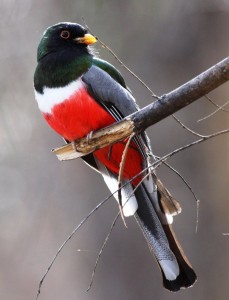
Elegant Trogon by Dominic Sherony
Chiricahua Mountains. In the Chiricahua Mountains where I conducted most of my Elegant Trogon research from 1977-1984, I found numbers in the S. Fork-Cave Creek Canyon complex were remarkably consistent. The low count of 20 adults was in 1979 and the high count of 23 adults occurred in 1978. Using the same methods, annual June S. Fork-Cave Creek trogon counts sponsored by the US Forest Service were conducted from 1991 through 2001. The peak number was 1994 when 30 volunteer observers found 22 trogons in the S. Fork-Cave Creek Canyon complex. The lowest number recorded was 1999 when 28 observers found just 12 adult Elegant Trogons. The lowest number ever found in the S. Fork-Cave Creek Canyon census was June 26, 2011 when only 7 trogons were detected. This was the same day the 223,000 Horseshoe II Fire was officially declared 100% contained. Eight (8) Elegant Trogons were found in this area in 2012, and this year 26 volunteers documented 6 trogons in the S. Fork-Cave Creek Canyon complex. Based on behaviors exhibited by the males and an observation 3 days earlier, it seems likely that 3 additional females were present—or 9 adult trogons altogether. Working in Rucker Canyon, a survey team discovered 3 other trogons, including a pair, but teams in 3 other Chiricahua canyons failed to find any. Therefore in 2013 the total number of known Elegant Trogons in the Chiricahua Mountains was 9, and there were probably 12 individuals altogether.
Directly through habitat destruction, or indirectly through watershed degradation, fuel reduction activities, actual fire suppression, or a combination of these and other factors, the 2011 Horseshoe Two Fire apparently continues to have a negative impact on Elegant Trogon populations in the S. Fork-Cave Creek Canyon complex of the Chiricahua Mountains. At present the S. Fork-Cave Creek area appears to be the only canyon system within its U.S. range where Elegant Trogons have suffered a clear and significant decline.

